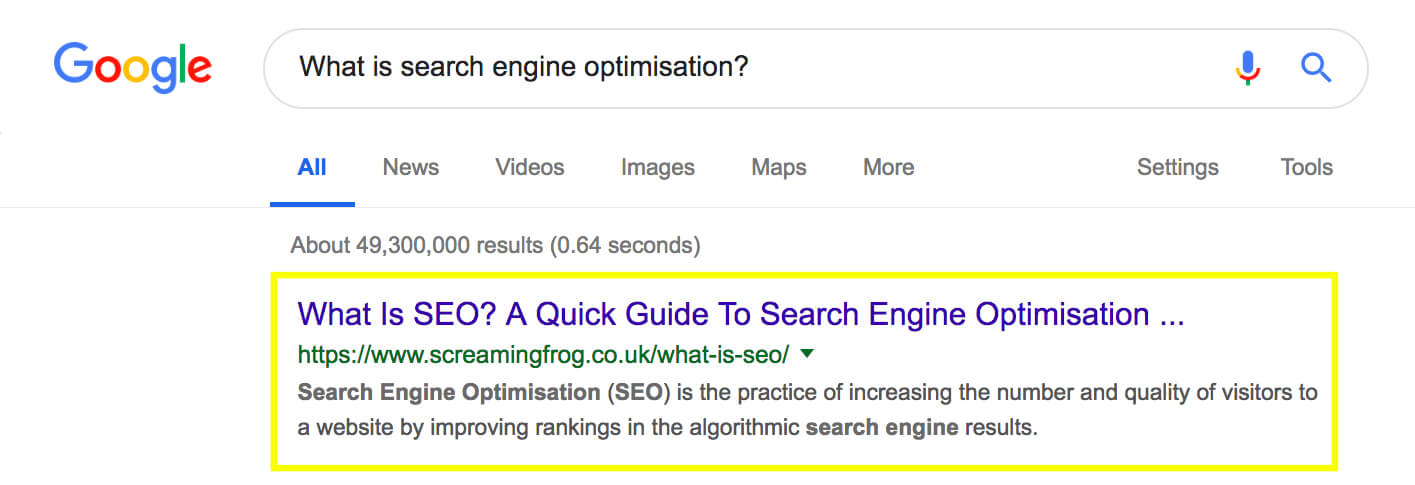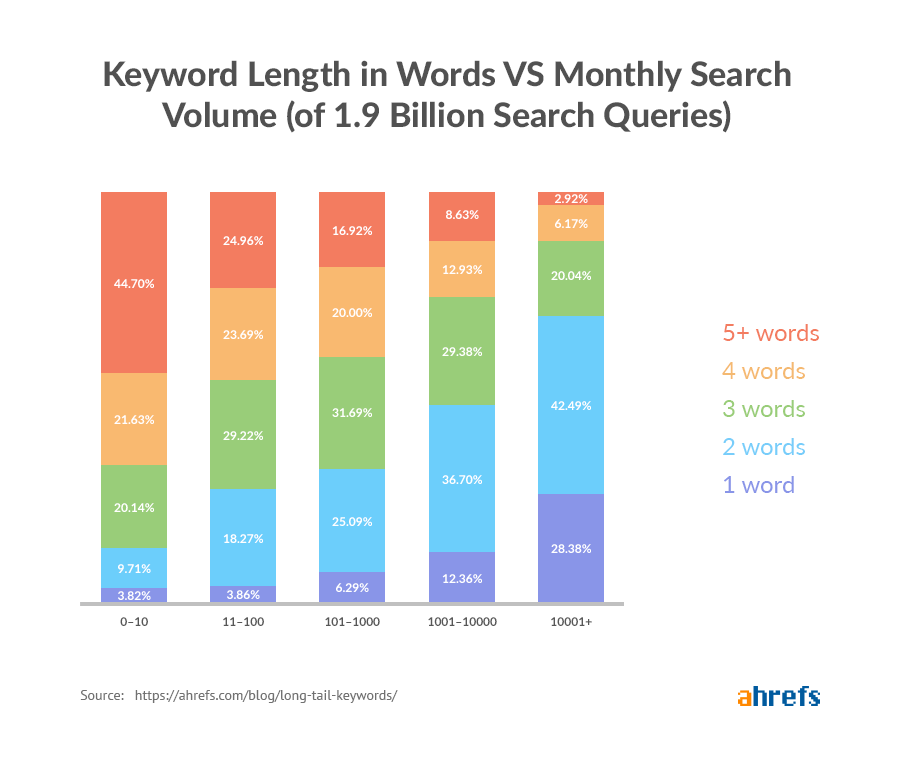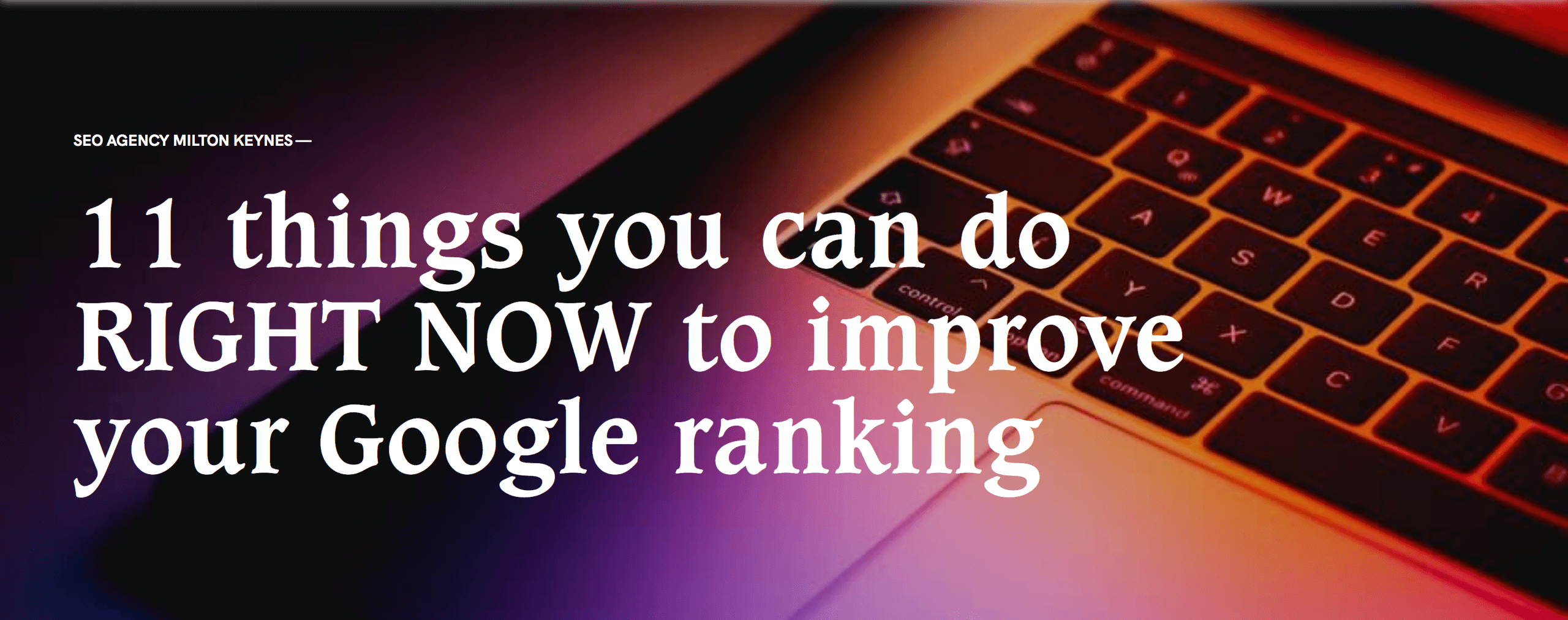Here's 8 stats, but the list is endless.
Everyone in the optimising game knows that it's an ever-evolving world, with constant search engine updates, best practices and newly ‘shunned’ (or black hat) tactics, with the ultimate goal of giving the user the best possible online experience, while simultaneously confusing and frustrating the providers of these experiences.
There are constant streams of reports, statistics and general noise that can be hard to keep up to date with, so moving forward I’m going to try to cherry pick some thought-provoking stats that you can take back to the meeting room, direct with your team and actually come up with an actionable strategy to make the most of these facts.
Luckily there are some great thought leaders in this SEO world with far greater knowledge than I, however collecting all this knowledge together really keeps us up to date in the world, and also summarising this for you gives you and your business some work to do before eventually needing to speak with your local SEO agency (or exploring FULLTIME.digital's SEO services) about your ongoing optimising needs.
Need some support?
✔️ Improve your Google ranking
✔️ Understand your site performance
1. 68% of online experiences begin with a search engine.

This research compiled by BrightEdge, if nothing else shows the absolute necessity of taking SEO seriously. If you’re not designing your web pages to catch your customer’s searches, you will be left in the cold while your competitors will scoop up the lovely organic traffic goodness. So don’t neglect search engine optimisation or search engines will neglect you.
2. 0.78% of Google searchers click on results from the 2nd page.
Slightly echoing the previous point, this statistic by Backlinko reinforces the fact that, while you can never expect to be ranking in the top 10 immediately, that you should always strive for this, as ultimately this is where 99.22% of organic traffic will go.
If you’re not aiming to get a slice of that, you’ll still be fighting the 100s or 1000s of other sites trying to get the remaining 0.78%. That isn’t any fun.
3. 53.3% of all website traffic comes from organic search.

Another great stat by BrightEdge shows that regardless of your social media, paid ads or any other factor, organic search is king when it comes to securing online users. And when you think about it, organic traffic is technically free. Yes you may need to pay for optimisation and yes it is an ongoing never ending process, but the users finding you are not being ‘bought’ or redirected to your site by some sponsored ads, this is genuine, organic and high quality traffic that has found your site because they’re looking for something that Google has deemed you supply, and you’re a perfect online match. In this context, you can view Google or other search engines as the top dating site, matching the needs of their users with the content / service / product providers they decide are the perfect fit.
4. 92.96% of global traffic comes from Google search, Google Images, and Google Maps.

GOOGLE IS KING. So forgive the slightly elementary graphic, but I couldn’t find a suitable image and I think this perfectly illustrates the point. Also thanks for Sparktoro for pointing out the obvious here; I don’t want to use the word ‘Monopoly’, but the Google guys have got a pretty tight grip on the search engine world.
This isn’t likely to change anytime soon, so consider working with them rather than against them to ensure you’re meeting their desired criteria. It’s pretty common knowledge there are over 200 ranking factors, so there’s always something to work on when it comes to optimising your site. If you’re consistently working on this and following best practices while doing it, Google WILL notice and you WILL rank higher as a result.
5. SEO drives 1000%+ more traffic than organic social media.
BrightEdge back at it with the crazy stat.
From my experience, I’ve seen small businesses take their social media a lot more seriously than their website optimisation. There seems to be a higher perceived value in this, but when looking at facts like this, it really gives the impression that social follows and likes are just vanity numbers; they look great when you have a large following, but if that isn’t affecting your bottom line, does it really matter at all? Food for thought thats all I’m saying…
6. 69.7% of search queries contain four words or more.
A lovely statistic by Ahrefs, and actually in my opinion gives a pretty solid glimpse hope for smaller companies looking to join a crowded market.
You might be a florist and sure you’re pretty likely NOT going to rank for the keyword ‘Flowers’, but if you spend some time researching some interesting search terms (using a tool like Answer The Public), you might decide that writing an article around ‘what flowers are poisonous to cats’ could have some better results.

7. 60% of marketers say that inbound (SEO, blog content, etc) is their highest quality source of leads.
Hubspot are big in the CRM game. Take their words seriously.
This statistic is (mostly) thanks for Googles ever-improving algorithms; they’re constantly trying to match the perfect content based on the specific user and that user’s search term. If someone in organically finding your content online, they very likely fit your target market and could be a prospective customer.
8. SEO leads have a 14.6% close rate.
The last but certainly not least statistic of this article, again brought to you indirectly by Hubspot, and it once again does echo the previous stat.
If someone is finding your content naturally online, Google has decided in their wisdom that you were the perfect fit for this user’s needs. I’d consider this a handoff from SEO to user experience and web design (you can read more about this in our Essential Tips for your Business Website article). SEO has done its work and the user has found your site.
Now its the website’s turn to convince this person that you are exactly what they need in this situation. Make sure it’s easy to find the information they’re looking for, and even easier to get in touch, whether its live chat, phone call, email, contact form or a simple download to provide some value.
Keep these statistics in mine during your next SEO related business meeting, and you’ll be ensuring you stay ahead of the game in securing more organic traffic, leads and ultimately sales.
FULLTIME.digital build and optimise websites specific to your needs and your business. Want to get serious about your website?
Get in touch and talk to the team.


